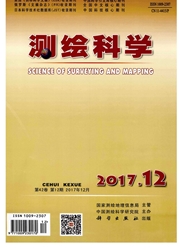

 中文摘要:
中文摘要:
针对当前沟谷尺度侵蚀定量化研究中构建干热河谷区沟谷DEM时主要集中在宏观尺度DEM或微DEM构建与分析,而对DEM评价指标及构建等的研究不够深入的问题,文章以云南元谋典型冲沟为例,基于径向基函数插值,以平均误差、均方根误差及高程正负偏差为指标,通过交叉验证及检查点法,对比分析不同基函数、邻域搜索点数及搜索方位对DEM插值的影响。结果表明,张力样条函数、邻域3~18个点插值效果较好;限制搜索方位降低了样本及检查点的平均误差,其他参数不敏感;构建了大比例尺冲沟DEM,能够较真实的模拟元谋冲沟地表形态。
 英文摘要:
英文摘要:
Aiming at the insufficiency of studying the evaluation index and construction of gully DEM in dry-hot valleys for the investigation of quantitative soil erosion in gully scale, the paper taking a typical gully in Yuanmou, Yunnan as example, compared and analyzed the influence of different basis functions, neighborhood searching points and searching orientations on DEM interpretation through the methods of cross-validation and check points with the indexes including Radial Basis Function(RBF) interpolation, Mean Error(ME), Root Mean Square Error(RMSE), Positive Maximum Elevation Deviation (PMED), and Negative Minimum Elevation Deviation(NMED). Result showed that the function of spline with tension was the best kernel function, and 3 to 18 points used in neighborhood interpretation would obtain an ideal DEM, while when sector types changed, except ME decreased correspondingly, other parameters remained almost the same. Moreover, the interpolated DEM with a map scale of 1 : 2 000 could be produced to accurately simulate the terrain morphology of the gully with fine details.
 同期刊论文项目
同期刊论文项目
 同项目期刊论文
同项目期刊论文
 期刊信息
期刊信息
